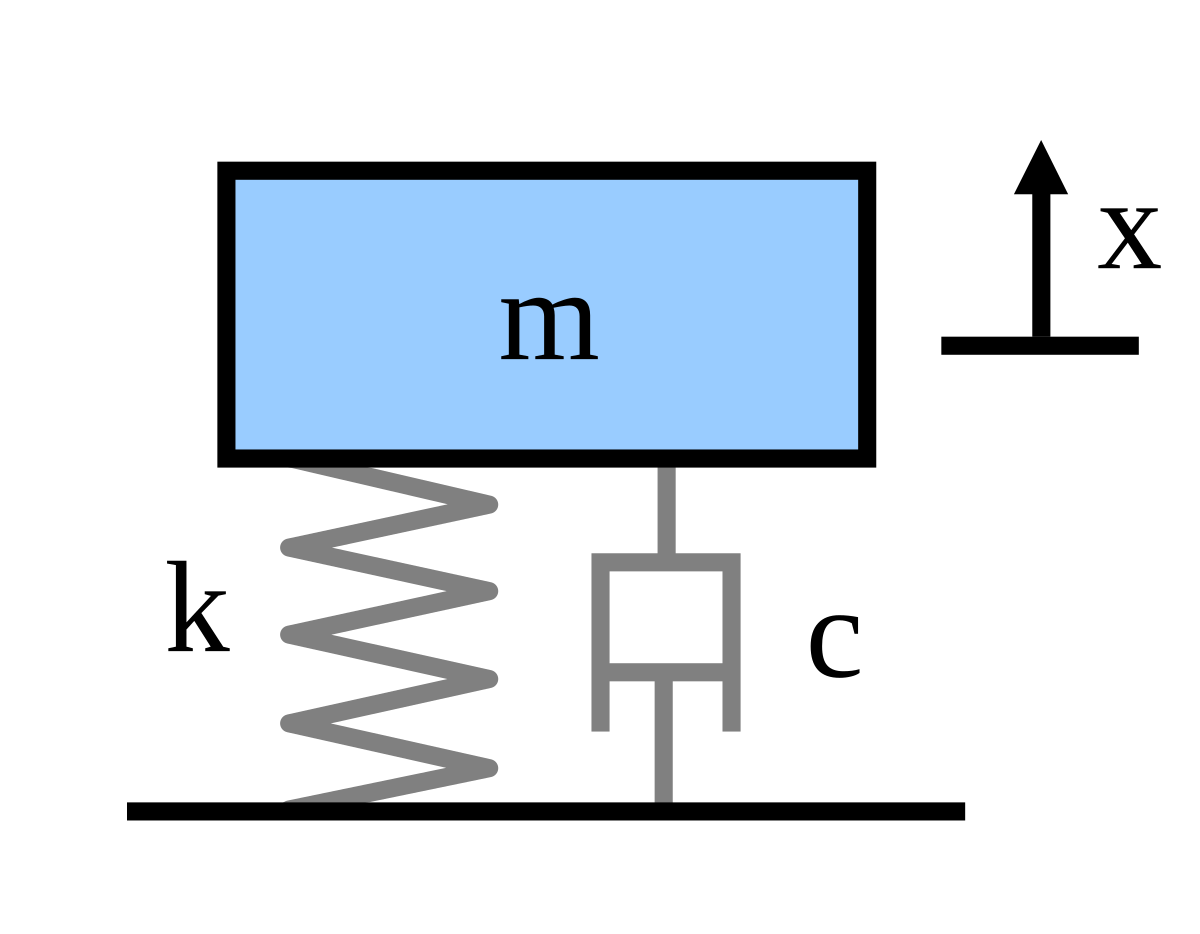Damping is the ability to attenuate oscillatory motion. The shock dampers in your car prevent you from bouncing up and down after hitting a pothole. Damping in a ski prevents bending and twisting vibrations to keep the edges engaged in the snow so you can maintain your turn through the gate. The mass-spring-damper model is the classic introduction to the equations of motion of these type of systems:

en.wikipedia.org
Not to get too mathy, but a mass-spring-damper system can be characterized by two parameters: the natural frequency and the damping ratio. The natural frequency is the frequency that the system wants to naturally oscillate at if perturbed and the damping ratio is an indication how fast the system settles back to steady state. The damping ratio can be either over damped (> 1), critically damped (== 1), or underdamped (< 1). A critically damped system will return to steady state in the quickest amount of time without any residual oscillation whereas a underdamped system will continue to oscillate as the magnitude of the oscillations decays to zero.
Skis are highly underdamped systems, at least in the bending mode. As a test, clamp a ski to a workbench with the front half overhanging the edge. Pluck the tip and then count the seconds go by as you wait for the oscillations to stop. As
@cantunamunch alludes, skiers and ski reviewers tend to conflate damping with other characteristics like mass or stiffness. When a reviewer discusses how damp a ski is, chances are the ski is just heavier than the norm. Case in point: when I do the pluck test with my Fischer Ranger 94 FRs versus my Head Monster 88s (often referred to as one of the "dampest" skis available), both skis have similar steady state times of ~5-6 seconds. However, the Monster has noticeably slower oscillations, which is expected since it is a heavier ski and adding mass to a mass-spring-damper system lowers the natural frequency.
Regarding stability, it's more than just remaining firmly fixed, it's how a system responds to disturbances. After getting hit by a bump, either real or metaphorical, does the system steer itself back to where it wants to be (stable), does it do nothing (marginally stable), or does it steer in a completely wrong direction (unstable)? I recently did a test where I weighted the tips of my skis to see if it would improve lateral stability through chop: the idea being if the center of mass is moved forward on the ski, lateral disturbances to the ski would induce a torque that would cause the ski to steer into the disturbance as opposed to away from it. It worked and I encourage others to give it a try. If you're brave and don't fear ACL injuries, you could try the inverse test by weighting the tails of your skis making them more unstable.
Another fun stability test is to get a skateboard with different kingpin angles in the front and back trucks. Going forward, the board naturally compensates if you start to lean one way or another. However, going backwards on the skateboard presents a whole different riding experience. I suspect this has a direct analogy to ski design regarding fore and aft sidecut and binding placement. A lot of skiers like to play with their mount points; they are effectively adjusting the stability margins of a ski by doing so. BTW, more stability is not necessarily a good thing. For example, fighter aircraft are inherently unstable to improve maneuvering performance. This could be true of skiing as well.






